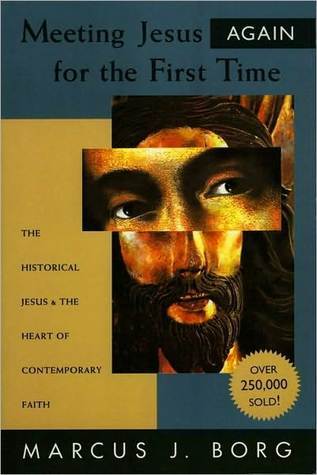More on this book
Community
Kindle Notes & Highlights
Read between
November 2 - December 8, 2019
The narrow way, the road less traveled, is life centered in the Spirit of God.
Our culture’s secular wisdom does not affirm the reality of the Spirit;
Accordingly, it looks to the material world for satisfaction and meaning. Its dominant values are what I call the three A’s–achievement, affluence, and appearance.
We may have the experience of being satiated and yet still hungry.
we are made in such a way that we have an appetite for the infinite.
Secondhand religion is a way of being religious based on believing what one has heard from others. It consists of thinking that the Christian life is about believing what the Bible says or what the doctrines of the church say. Firsthand religion, on the other hand, consists of a relationship to that to which the Bible and the teachings of the church point–namely, that reality that we call God or the Spirit of God.
The transformation from secondhand religion to firsthand religion, from living in accord with what one has heard to life centered in the Spirit, is central to the alternative wisdom of Jesus and also to the Jewish tradition in which he stood. One of the most powerful expressions of this transformation is to be found in the book of Job.57 At its climax, after Job has experienced a dramatic self-disclosure of God, he exclaims: I had heard of thee by the hearing of the ear, but now my eye beholds thee.58
from secondhand belief to firsthand relationship–
the good news of Jesus’ own message–
The path of transformation of which Jesus spoke leads from a life of requirements and measuring up (whether to culture or to God) to a life of relationship with God. It leads from a life of anxiety to a life of peace and trust. It leads from the bondage of self-preoccupation to the freedom of self-forgetfulness. It leads from life centered in culture to life centered in God.
imaging Jesus as the emissary, child, and incarnation of the wisdom of God. Jesus
Christology focuses on the relationship between Jesus and God.
humanity and divinity of Jesus
Nicene Creed, which has been especially important in shaping Christian images of Jesus,
Christology. The threefold division of the creed into sections about Father, Son, and Spirit reflect the emerging Trinitarian dogma of the fourth century.
“Son of the Father” and the second person of the Trinity. As such, he is the only begotten Son of God, begotten before all worl...
This highlight has been truncated due to consecutive passage length restrictions.
God of very God, indeed, “of one substance wi...
This highlight has been truncated due to consecutive passage length restrictions.
the most familiar Christology to people both within and outside of the church is one that images Jesus’ relationship to God as Son of the Father.
the New Testament contains a variety of Christological images, which function as metaphors for imaging the significance of Jesus and his relationship to God.
Because I have called you and you refused, have stretched out my hand and no one heeded, and because you have ignored my counsel and would have none of my reproof, I also will laugh at your calamity; I will mock when panic strikes you, when panic strikes you like a storm.7
In the second half of the speech, she speaks of her role in creation. She was in the beginning with God before the world was created:
over every people and nation I have held sway.
she was in the tabernacle in the wilderness until she came to dwell in Jerusalem.
a spirit that is intelligent, holy, unique, manifold, subtle, mobile, clear, unpolluted, distinct, invulnerable, loving the good, keen, irresistible, beneficent, humane, steadfast, sure, free from anxiety, all-powerful, overseeing all, and penetrating through all spirits. . . .
Like God, she is omnipotent and the sustaining source of life:
We are accustomed to hearing God spoken of as the one who led Israel out of Egypt. But in Wisdom of Solomon, it is Sophia who does this.
Sophia is closely associated with God, at times becoming indistinguishable from God in terms of the functions and qualities ascribed to her,
Speaking her words, he is the envoy or emissary of Sophia.
personification of God as Sophia suggests that God is like a woman; and Jesus is a spokesperson for the compassion of Sophia/God.
That tradition also spoke of a Kingdom, and the Kingdom of which Jesus spoke may well be the Kingdom of Wisdom and not a Kingdom coming with the fires of the final judgment.
The genuine letters of Paul, all written in the fifteen years before his execution in Rome around the year 64, are our earliest witness to the early Christian movement.
the post-Easter Jesus–the risen living Christ–is absolutely central to his experience and theology.
We see this most clearly in Paul’s use of the language of justification.
“justified”
“innocent” or “acquitted,” it was the verdict one would want to hear: it meant that one had been found to be in the right.


